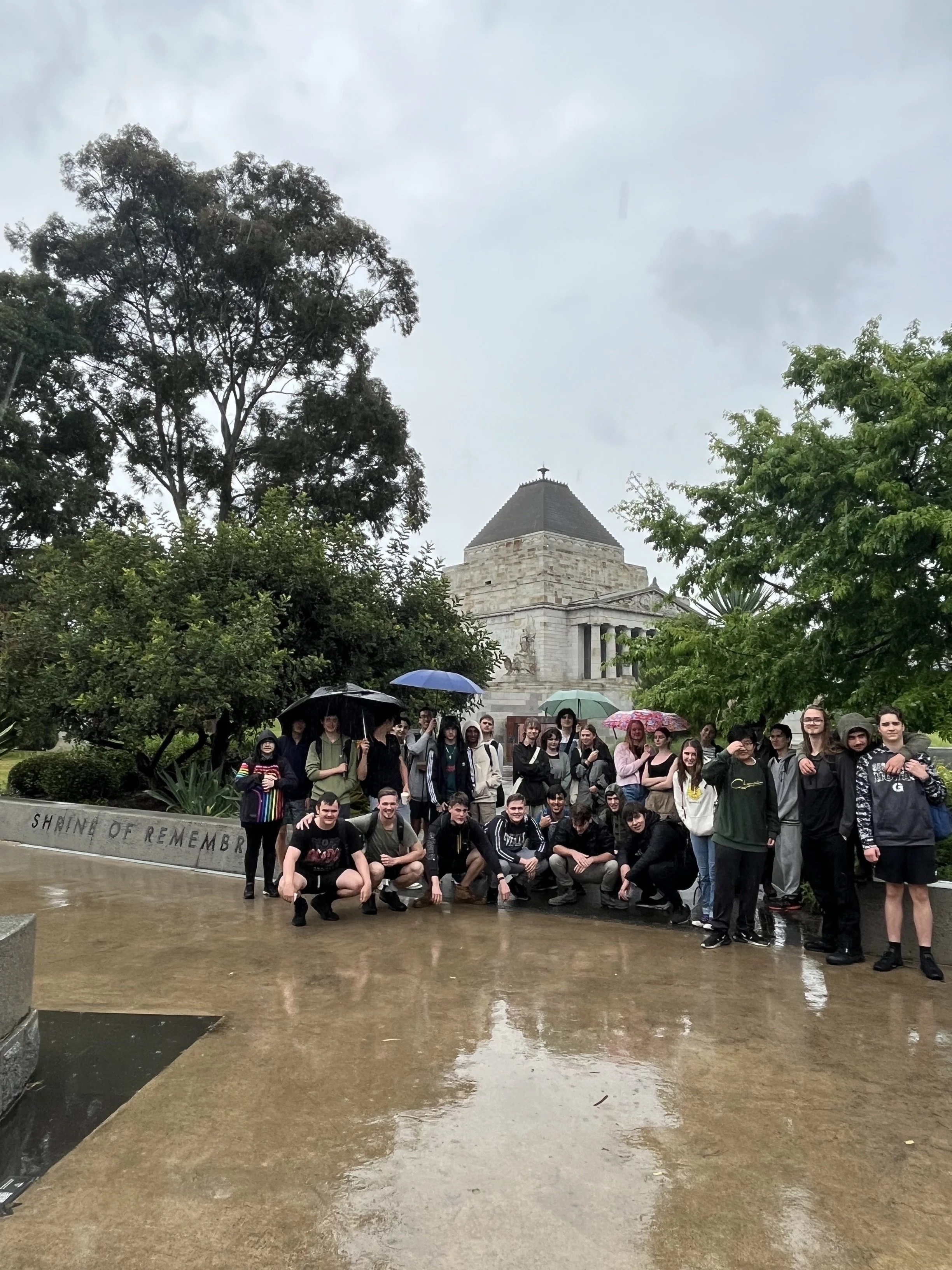History
Unit 1-4
History is the practice of understanding and making meaning of the past. Students learn about their historical past, their shared history, and the people, ideas and events that have created present societies and cultures. History seeks to extend students’ cultural, economic, social and political understanding while developing analytical skills and using their imagination.
The study of history draws links between contemporary society and its history, in terms of its social and political institutions and language. An understanding of the link between accounts of the past and the values and interests of the time in which the accounts were produced is also a feature of the study of history. How do the values of the time influence the way events were recorded? What really was going on?
VCE History is relevant to students with a wide range of expectations - including those who wish to pursue formal study at tertiary level - as well as providing valuable knowledge and skills for an understanding of the underpinnings of contemporary society. History not only shows where we came from and why we are the way we are, it gives us valuable skills in analysis, writing and critical thinking that employers say are the most valuable skills they seek.
Entry
There are no prerequisites for entry to Units 1, 2 and 3. Students must undertake Unit 3 prior to undertaking Unit 4. Units 1 to 4 are designed to a standard equivalent to the final two years of secondary education.
Mordern History
Unit 1: Change and Conflict
In Unit 1, students examine life through two areas of study: Ideology and Conflict, and Social and Cultural Change.
In AoS1, students focus on the events, ideologies, individuals and movements of the period that led to the end of empires and the emergence of new nation states before and after World War One; the consequences of World War One; the emergence of conflict; and the causes of World War Two. They investigate the impact of the treaties which ended the Great War and which redrew the maps of Europe and its colonies, breaking up the former empires of the defeated nations, such as the partitioning of the German, Austro-Hungarian and Ottoman Empires. They consider the aims, achievements and limitations of the League of Nations.
In AoS2, students focus on the social life and cultural expression in the late nineteenth century and the first half of the twentieth century, and their relation to the technological, political and economic changes of the period. Students explore particular forms of cultural expression from the period. We will look at the Roaring Twenties, the Great Depression, and the impact of the rise of Nazism in Germany. We examine questions such as, what was life like for young people in Nazi Germany? Why were the 1920s the 'roaring', socially progressive and challenging to the old order? Was prohibition effective in the US?
Unit 2: The changing world order
In Unit 2, students will explore the nature and impact of the Cold War and the challenges and changes to existing political, economic and social arrangements in the second half of the twentieth century. This will be done through two areas of study: Causes, Course and Consequences of the Cold War, and Challenge and Change.
Students explore the causes of the Cold War in the aftermath of World War Two. They investigate significant events and developments and the consequences for nations and people in the period 1945-1991. This area of study will look at the 'hot' conflicts such as the Korean and Vietnam War, the space race, the nuclear arms race, and other ways the USA and USSR competed with and challenged each other over the decades. We will also look at the so called 'Red Scare' and Communist witch hunts.
In the Challenge and Change area of study, students will focus on the ways in which traditional ideas, values and political systems were challenged and changed by individuals and groups in a range of contexts during the second half of the twentieth century and first decade of the twenty-first century (topics might include the end of Apartheid, the Civil Rights Movement, and turmoil in the Middle East). Students also consider the extent to which ideas, values and political systems remained the same and/or change was resisted. Students explore the causes of significant political and social events and movements, and their consequences for nations and people.
Unit 3 and 4: Revolutions
Revolutions share the common aim of breaking with the past by destroying the regimes and societies that engender them and embarking on a program of political and social transformation. As processes of dramatically accelerated social change, revolutions have a profound impact on the country in which they occur as well as important international repercussions.
At TC we study the Russian Revolution in Unit 3 and the Chinese Revolution in Unit 4, The focus of study for each revolution is broken into causes and consequences. Why do revolutions happen? How do they work? Who benefits and who suffers? How have revolutions affected the development of the world and why are they so important to us here in Australia? This is a fascinating subject for anyone who wants to better understand how world powers today such as Russia and China came to be.
Assessment
Satisfactory Completion:
The award of satisfactory completion for a unit is based on a decision that the student has demonstrated achievement of the set of outcomes specified for the unit. This decision will be based on the teacher’s assessment of the student’s performance on assessment tasks designated for the unit.
Levels of Achievement
Units 1-4:
The Victorian Curriculum and Assessment Authority will supervise the assessment of all students undertaking VCE History. SACs will include tasks such as a historical inquiry, source analysis and essay writing.
Unit 3 School-assessed Coursework: 25 %
Unit 4 School-assessed Coursework: 25 %
End-of-year examination: 50 %


